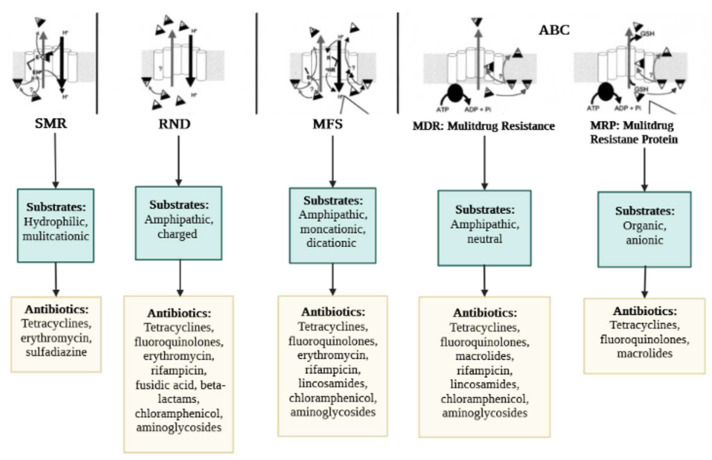Figure 3.
Mechanistic pathways and major substrates (antibiotics) of bacterial efflux pumps. Mechanistic pathways: The proton (H+) antiporter mechanism is used by the SMR, MFS, and RND pumps. H+ is most likely transported from glutamate (E) in the “a” conserved segment of SMR and from arginine (R) in the “b” conserved portion of MFS (these domains are identified in Figure 2). The same conserved amino acid (E) for SMR pumps and a conserved amino acid residue (E or aspartate) in the “d” region for MFS proteins may suggest recognition of positively charged substrates. ATP is used as an energy source by ABC pumps. With all families of pumps, the target drug appears to be removed from the membrane instead of the cytosol. The carrier might then act as a flippase, speeding the flow of the chemical from the membrane’s inner to the outer surface. Alternatively, the pump might act as an "aspirator," vacuuming the chemical from the membrane and transporting it to the inner region of a channel that is closed to the cytosolic section of the membrane but accessible to its outer surface. MRP transporters (ABC) also need glutathione (GSH), which can be coupled to the drug before or during extrusion. In addition, the MRP transporters (ABC) rely on glutathione (GSH), which can be coupled to the substrate either before or during the extraction process. Common substrates and antibiotics: Chemical classes of antibiotics for which efflux has been documented for one or more pumps in each family are grouped according to their general physicochemical properties.

